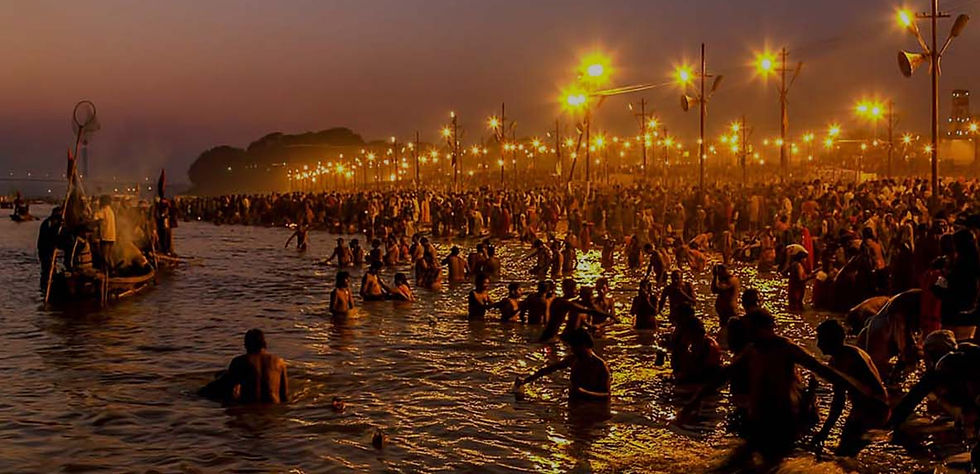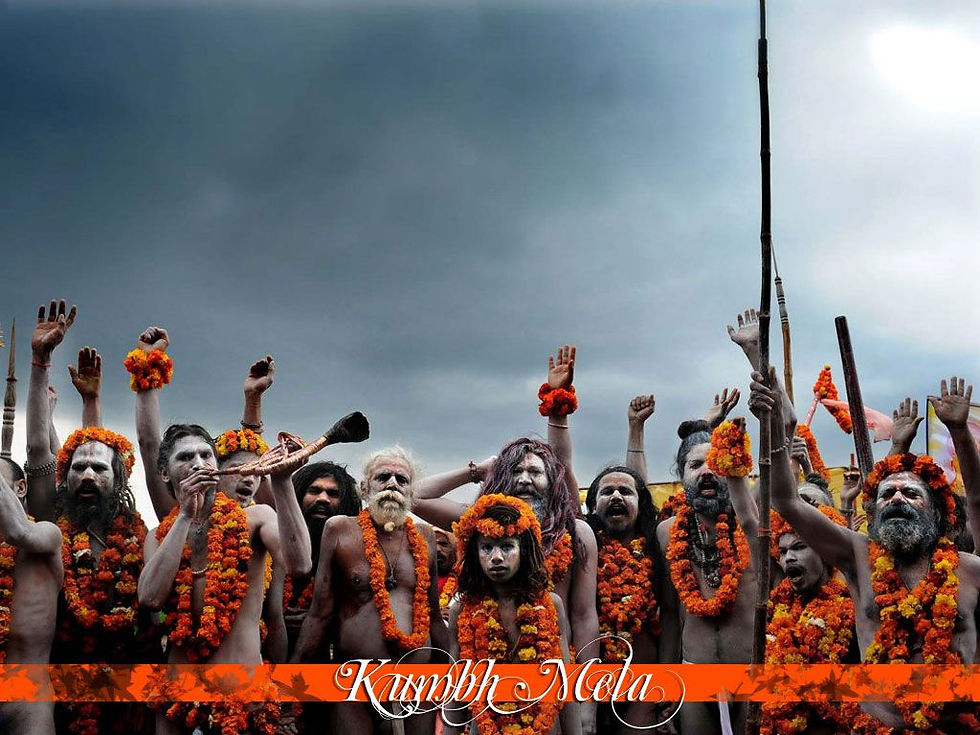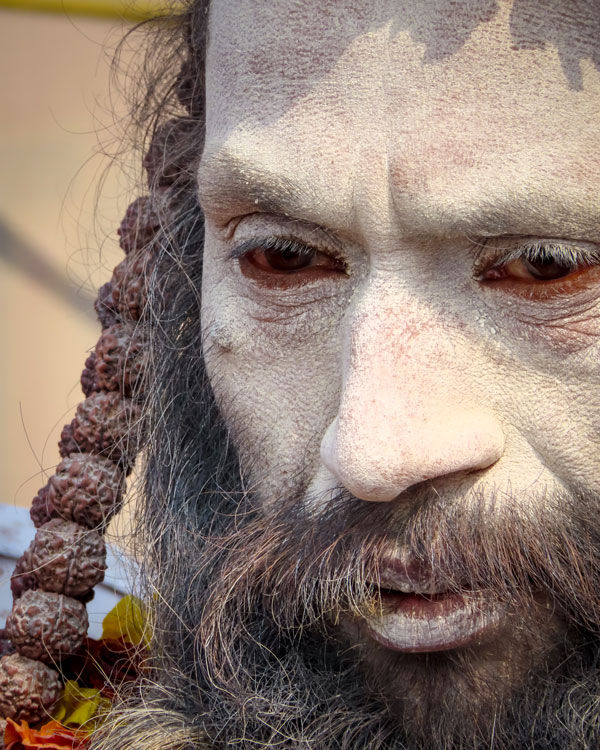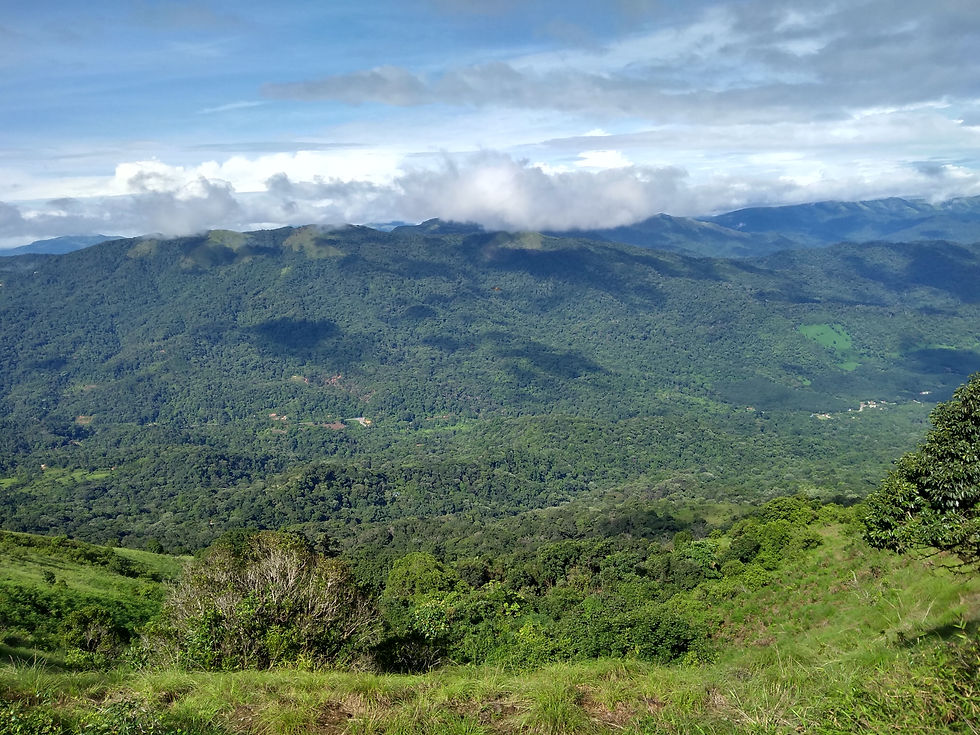THE PRAYAGRAJ 'MAHA KUMBH': World's Largest Spiritual Gathering.
- ESTEEMIT'S Tour's
- Mar 23, 2020
- 4 min read

The most beautiful experience we can have is the mysterious – the fundamental emotion which stands at the cradle of true art and true faith.
Lost deep amongst an ever-growing crowd of thirty million pilgrims, the colours and calls around me were enchanting. Stylish saris wobbled in the air, drying from a dip in the sacred waters, while the suns glare was as bright as the orange mango adorning many of the devotees. Brothers and sisters were chanting alongside their mothers and fathers, and all the hues and happenings had started to blur into one. ThePraygraj Kumbh Mela was in full swing, and with nearly a month of the event left it was remorseless unrelenting.

There are 3 Spiritual River's Ganga, Yamuna and hypothetical river Saraswati. This point is the Sangam, and we had inadvertently arrived at the right place, had it only been a day later.My ears were being pulled in multiple directions, while my eyes wanted to follow a different path.Allahabad, the ordinarily small and unassuming city of this grand event, was once the capital of Uttar Pradesh.
Inspiration, Information and transformation are how I had heard the Kumbh Mela described, and as we wandered through the makeshift tents and camps varying from glamorous Yoga retreats with lavish en-suite rooms, to simple blankets where Naga Sadhus rested, I felt an intense amount of inspiration to travel.

Kumbh Mela, in Hinduism, is a religious pilgrimage that is celebrated four times over a course of 12 years. The geographical location of Kumbh Mela spans over four locations in India and the Mela site keeps rotating between one of the four pilgrimages on four sacred rivers as listed below:
Haridwar on the Ganges in Uttarakhand
Ujjain on the Shipra in Madhya Pradesh
Nashik on the Godavari in Maharashtra
Prayagraj at the confluence of the Ganges, the Yamuna, and the mythical Sarasvati in Uttar Pradesh
Each site’s celebration is based on a distinct set of astrological positions of the Sun, the Moon, and the Jupiter. The celebrations occur at the exact moment when these positions are fully occupied, as it is considered to be the holiest time in Hinduism. The Kumbh Mela is an event that intrinsically encapsulates the science of astronomy, astrology, spirituality, ritualistic traditions, and socio-cultural customs and practices, making it extremely rich in knowledge.

It represents like the marriage of LORD SHIVA where everyone gather Devas,Sadhus,Detya's,Asura's, all the Creatures of planet enjoys the marraige. Similarly everyone love and rejuvenate at "MAHAKUMBH".
Pilgrims to the Kumbh Mela come from all sections of the religion ranging from Sadhus (saints) and Naga Sadhus who practice ‘sadhana’ and keenly follow a strict path of spiritual discipline, to Hermits who leave their seclusion and come to visit the civilization only during the Kumbh Mela, to seekers of spirituality, and to common people practicing Hinduism.
During the Kumbh Mela, a number of ceremonies take place; the traditional procession of Akharas called ‘Peshwai’ on elephant backs, horses and chariots, the shining swords and rituals of Naga Sadhus during ‘Shahi Snaan’, and many other cultural activities that attract millions of pilgrims to attend the Kumbh Mela.

The festival is traditionally credited to the 8th-century Hindu Saint Adi Shankara as a part of his efforts to start major Hindu gatherings for philosophical discussions and debates along with Hindu monasteries across the Indian subcontinent.However, there is no historic literary evidence of these mass pilgrimages were called "Kumbha Mela" prior to the 19th-century. There is ample evidence in historic manuscripts and inscriptions of an annual Magha Melain Hinduism – with periodic larger gatherings after 6 or 12 years – where pilgrims gathered in massive numbers and where one of the rituals included a sacred dip in a river or holy tank. According to Kama MacLean, the socio-political developments during the colonial era and a reaction to the Orientalism led to the rebranding and remobilisation of the ancient Magha Mela as the modern era Kumbh Mela, particularly after the Indian Rebellion of 1857.
The weeks over which the festival is observed cycles at each site approximately once every 12 years based on the Hindu solar calendar and the relative astrological positions of Juipiter, sun and moon. The gap between Prayag and Haridwar festivals is about 6 years, and both feature a Maha (major) and Ardha (half) Kumbh melas. The exact years – particularly for the Kumbh Melas at Ujjain and Nashik – have been a subject of dispute in the 20th-century. The Nashik and Ujjain festivals have been celebrated in the same year or one year apart, typically about 3 years after the Haridwar Kumbh Mela. Elsewhere in many parts of India, similar but smaller community pilgrimage and bathing festivals are called the Magha Mela, Makar Mela or equivalent. For example, in Tamil Nadu, the Magha Mela with water-dip ritual is a festival of antiquity. This festival is held at the Mahamaham tank (near Kaveri river) every 12 years at Kumbakom attracts millions of South Indian Hindus and has been described as the Tamil Kumbh Mela. Other places where the Magha-Mela or Makar-Mela bathing pilgrimage and fairs have been called Kumbh Mela include Kurukshetra,and Panauti(Nepal).
The Kumbh Melas have three dates around which the significant majority of pilgrims participate, while the festival itself lasts between one to three months around these dates. Each festival attracts millions, with the largest gathering at the Prayag Kumbh Mela and the second largest at Haridwar. According to the Encyclopaedia Britannica, 60 million Hindus gathered for the Kumbh Mela in 2001.The festival is one of the largest peaceful gathering in the world, and considered as the "world's largest congregation of religious pilgrims".It has been inscribed on the UNESCO's Representative List of Intangible Cultural Heritage of Humanity The festival is observed over many days, with the day of Amavaysa attracting the largest number on a single day. An estimated 30 million attended the Prayag Kumbh Mela on 10 February 2013.
'KUMBH' is beyond life and spirituality it should be celebrated resourcefully.






Comments